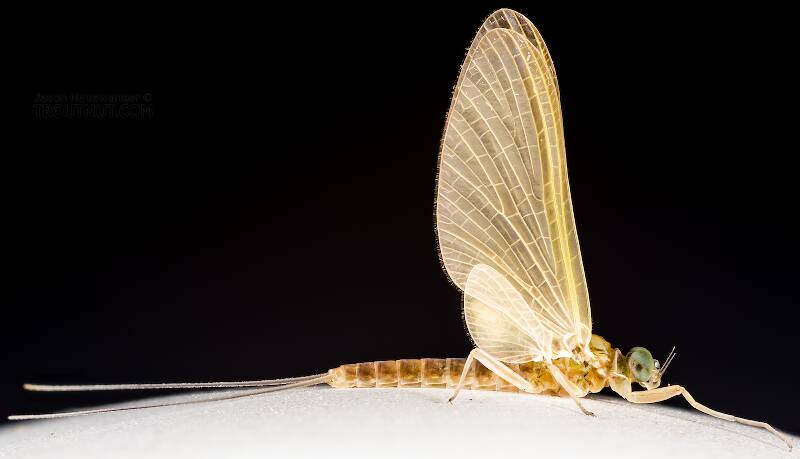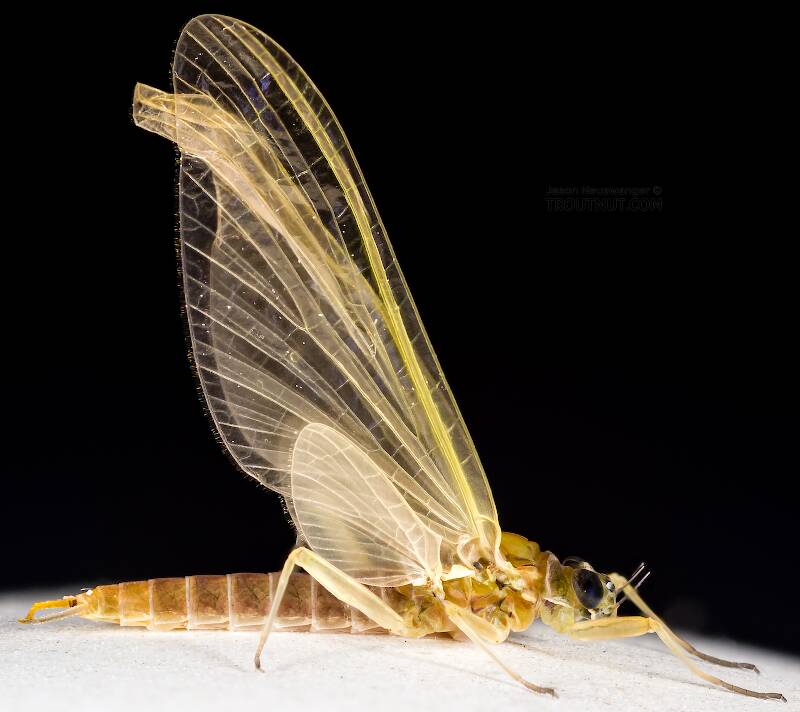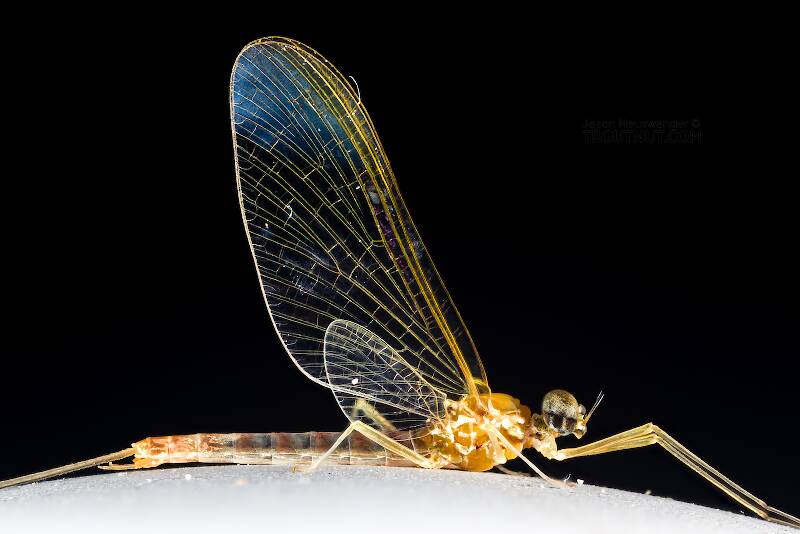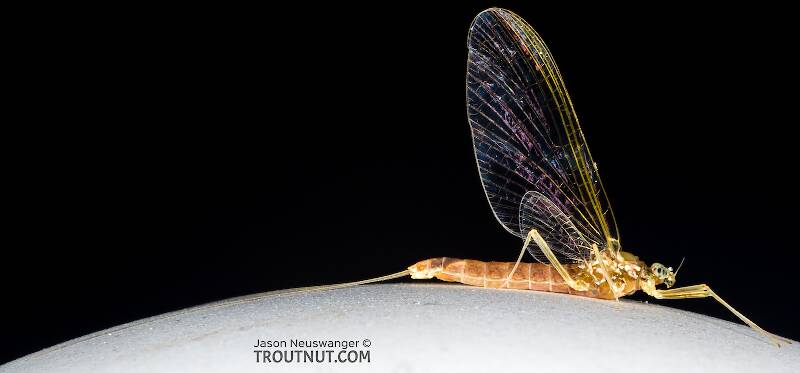
Salmonflies
Pteronarcys californica
The giant Salmonflies of the Western mountains are legendary for their proclivity to elicit consistent dry-fly action and ferocious strikes.


Mayfly Species Cinygmula tarda
Species Range
Physical description
Most physical descriptions on Troutnut are direct or slightly edited quotes from the original scientific sources describing or updating the species, although there may be errors in copying them to this website. Such descriptions aren't always definitive, because species often turn out to be more variable than the original describers observed. In some cases, only a single specimen was described! However, they are useful starting points.
Male Spinner
Wing length: 7.5 mm
A small species with untinted wings; a spine on inner margin of penes only; dark mid-ventral ganglionic marks.
Head light wood-brown; bases of antennae ochreous; eyes dull greenish in living insect, almost contiguous. Often slight reddish or purplish shading next to the eyes. Thorax light brown; yellowish ochre shading on mesonotum anterior to scutellum, and on the anterior portions of the metanotum. Legs pale brown. Wings hyaline, untinted. Cross veins “in the basal half pale, indistinct, darker and better defined in the apical area, especially the costal ones” (McD.). Abdominal segments 2-7 hyaline; tergites light brown on posterior half or third, the postero-lateral corners darker; anterior portions of each tergite pale hyaline. Sternites pale with brown oval ganglionic markings. Segments 8-10 opaque; tergites light brown, sternites deep ochreous. Penes with a short spine on inner margins only (see fig. 103). Tails dirty white.
This species is allied to Cinygmula mimus and Cinygmula ramaleyi, by the type of genitalia. Differs from both of these in structural characters of genitalia and in the untinted wings.
Specimens of the Mayfly Species Cinygmula tarda
1 Male Dun

1 Female Dun

1 Male Spinner

This one is difficult to identify, though I went into a lot of detail since I caught so many and their fall really got the fish rising for a while at dusk. The penes have a single set of lateral subapical spines, and the wings of the male spinner appear to be untinted, although there may be a barely-perceptible uniform yellow tint. The two claws at the end of each tarsus are similar to each other in shape. The wing is 7.5 mm long and the body is 7 mm long.
I think these are the possibilities:
1. The best guess is Cinygmula tarda, which is the only species matching the size of this specimen in Needham et al (1935). The rest of the description seems to fit pretty well. However, the picture of the genitalia in that source and the one Slater & Kondratieff (2004) differ somewhat from each other and from this specimen, which more closely fits the drawing for Cinygmula mimus.
2. My next guess would be Cinygmula tioga. The original description in Mayo (1952) fits remarkably well, and it's only reported to be 1 mm longer than this specimen (within the likely range of natural variation). It hasn't been reported yet from Washington, only California and Oregon, but the sites in north-central Oregon aren't implausibly far from west-central Washington. However, the drawing of the penes suggests that the lateral spine should be longer or located closer to the tip than in this specimen, and that species is also supposed to have yellow-tinged wings. There may be a very faint tinge to this specimen, but it's hard to tell.
3. It could be either a species not yet described or an undescribed variant of a current species.
And here's a quick list of why other local species were ruled out:
mimus — This species is the best match for the genitalia, but it's supposed to be much larger with a wing length of 10-11.5 mm, and it should have clearer tinting to the wings in a particular pattern. However, Mayo (1952) notes that mimus should not have tracheations on the tergites, as this one clearly does, which would make it fit tioga. I'm not sure where tarda falls on that characteristic. Also, Slater & Kondratieff (2004) describe the compound eyes of mimus as contiguous, which doesn't fit this specimen. This specimen also has dark mid-ventral markings on the sternites, which mimus should lack.
uniformis — wing length 10 mm, small ventral subapical spine on penes not present in this specimen,
reticulata — wing length 9 mm, has distinctive wing patterning definitely not present on this specimen.
par — wing length 9-10 mm, penes lack prominent lateral spines, generally shaped wrong, tarsal claws would be dissimilar in par
ramaleyi — wing length 10 mm, penes shape way off
gartrelli — wing length 10 mm, crossveins in costal half of forewing margined with brown (unlike this specimen), penes shape similar being in same group with mimus, but has an extra small spine not present in this specimen
1 Female Spinner

Start a Discussion of Cinygmula tarda
References
- Needham, James G., Jay R. Traver, and Yin-Chi Hsu. 1935. The Biology of Mayflies. Comstock Publishing Company, Inc.
Mayfly Species Cinygmula tarda
Species Range
Resources
- NatureServe
- Integrated Taxonomic Information System
- Global Biodiversity Information Facility
- Described by McDunnough (1929)

